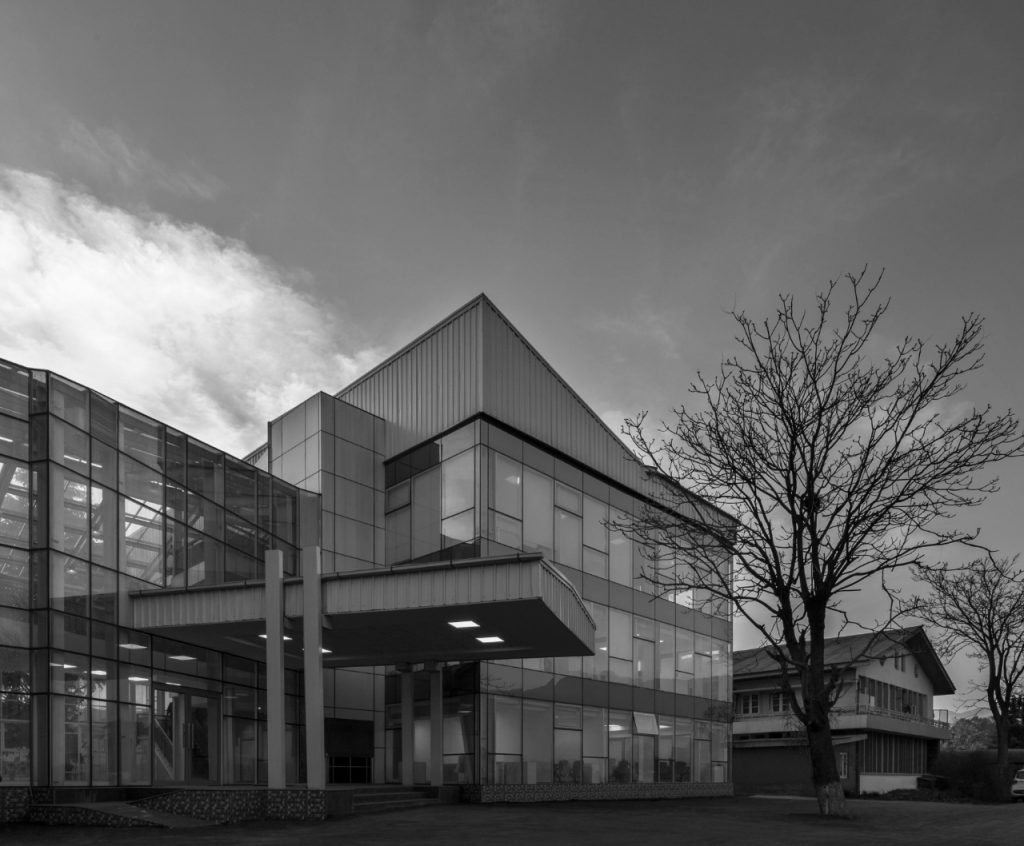Designing functional buildings operating in high altitudes with an extremely cold climate is a challenge for even the most talented professionals. It requires in-depth knowledge of the area, the climate pattern, direction and amount of the sun’s rays, façade design, and etcetera; amongst a lot of other factors. For example, let us take into consideration Leh, a town in the Indian state of Jammu and Kashmir. It is a mountain dominated the landscape at an altitude of 3,500m. Experiencing a cold desert-like climate, Leh has long, unforgiving winters from November to early March, with a minimum temperature falling well below freezing for most of the winter season. The weather in the remaining months is generally warm during the day. Due to such harsh climatic conditions prevailing for approximately half a year, a lot of services like education come to a standstill in the town.
Owing to their decades worth of architectural skill and knowledge, ANA Design, was able to overcome the obstacles posed by the area to develop Kashmir University’s Satellite Campus in Leh. It was made possible by leveraging intelligent technology and combining it with innovative thinking to enable the production and establishment of components at the site. This cutting-edge design has not only helped in developing the campus but also has assisted in increasing the duration of its operation from six months (most other educational institutes) to nine months in a year. ANA Design has been instrumental in having a ‘real’ impact in the region, working towards furthering education, a fundamental tool for the development of any region.
The team at ANA Design realized, that developing a modern educational institute in a location strained of amenities required efficient design and the technology to utilize the available solar energy. A simple idea of making the most of what the sun has to offer fuelled the entire project. Let’s have a look at a few of the equipment that helped bring the project to fruition.

Solar Tubes:
Light tubes (also known as light pipes or tubular skylights) are physical structures used for transmitting or distributing natural light for the purpose of illumination and are examples of optical waveguides. They are efficient and provide abundant light that brightens the entire complex. A great example of a clean electrical device has proven to be an economical implementation, saving costs that would have otherwise gone into artificial lighting.

Grid interactive solar rooftop system:
Following the clean energy approach, the firm installed Photovoltaic systems on rooftops of the university to directly convert solar energy into electrical energy that can be used for lighting, heating, or even powering up devices such as computers. The electricity generated could be made use of by incorporating it into the grid at regulated feed-in tariffs.

Low E Glass:
Low E Glass is a prismatic glass that allows the solar radiation to pass through only when the angle of radiation is low (i.e. in winter), and in summer protects the space from overheating. In this manner, the university building was able to utilize and momentarily trap the heat of the sun during winters and protect students from the harsh UV rays during summers.
Making use of the above pieces of equipment, ANA Design was able to provide good lighting and heating at negligible costs and leverage the abundant solar energy to produce electricity, thereby making the building not only more efficient but also habitable by students in months which were earlier considered too extreme for normal functioning and operation. Thus, the team at ANA Design were not only able to construct an ideal educational institution for an extreme region such as Leh, but also give the youth a chance at educating themselves and bettering the nation.
ANA Design mastered the art of landscape design. The architecture of educational institutes in Kashmir University Satellite Campus, Leh is designed to be operational in high altitudes even when the climate is extremely cold. The climatic conditions of the state refrain the students from attending schools and college for months. Hence, the structure is designed using the basic idea of using solar tubes for transmitting or distributing natural light. Architecture in these buildings leveraged the abundant solar energy to produce energy and keep the structure warm. These designs helped in creating cost-effective structures.






Very interesting, good job, and thanks for sharing such good information.
You many also like to check the foreign language courses
Thankyou! Sure will check it out!